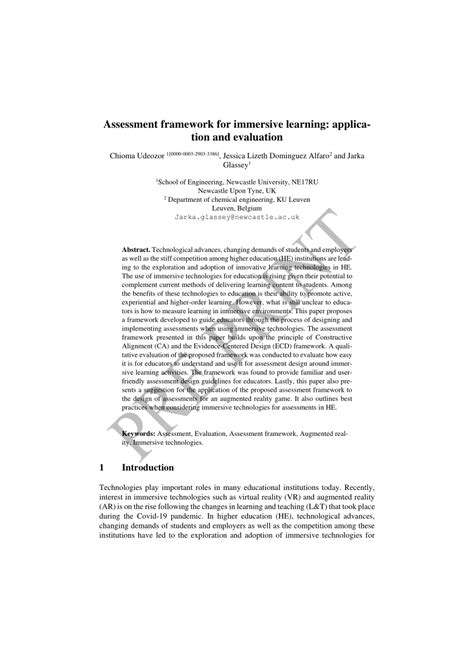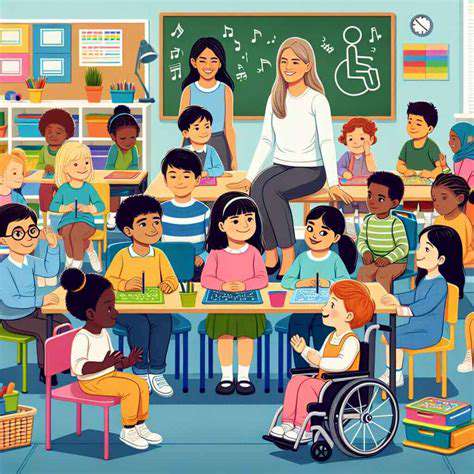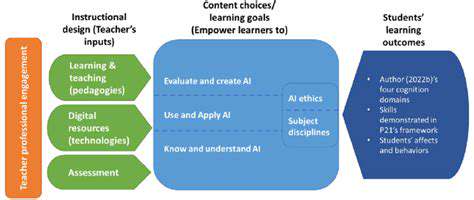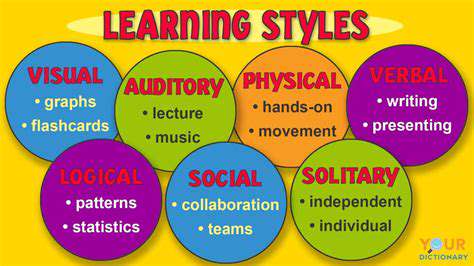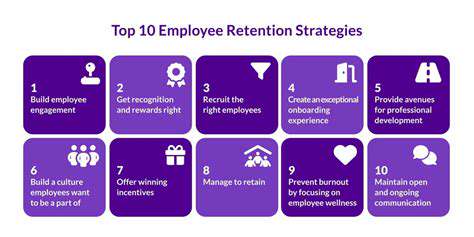Assessing Equity in Hybrid Learning Models
Defining Equity in Hybrid Learning
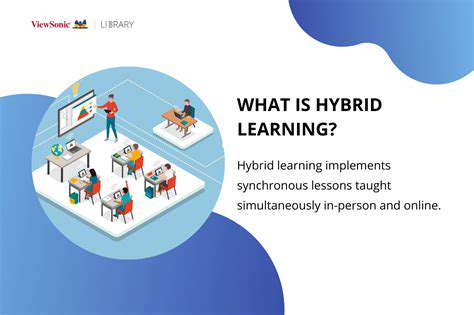
Defining Equity in Hybrid Learning
Hybrid learning environments present unique challenges in ensuring equitable access and outcomes for all students. Equity in this context goes beyond simply providing access to technology; it necessitates a deep understanding of the diverse needs and circumstances of each learner, recognizing that digital divides can exacerbate existing inequalities. This includes considering factors like reliable internet access, access to appropriate devices, and the necessary technical support to navigate online platforms.
Furthermore, equitable hybrid learning environments must address the potential for learning disparities between students who participate in in-person learning and those who engage primarily online. Strategies must be developed to ensure that online learners are not disadvantaged in terms of social interaction, access to individualized support, or opportunities for hands-on learning experiences.
Addressing the Digital Divide
A critical component of achieving equity in hybrid learning is addressing the digital divide. This encompasses a wide range of factors, from the availability of reliable internet access in students' homes to the provision of necessary devices and the training to effectively utilize them. Schools must proactively identify and support students facing these challenges, offering them solutions such as hotspots, loaner devices, or tutoring in digital literacy. This requires a comprehensive assessment of student needs and a commitment to providing tailored support.
Implementing equitable solutions to address the digital divide necessitates collaboration between schools, families, and communities. Partnerships with local organizations and community centers can help expand access to resources and create a supportive network for students who may face barriers to equal participation in hybrid learning.
Promoting Inclusivity and Accessibility
Equity in hybrid learning extends beyond the technical aspects to encompass the creation of inclusive and accessible learning environments for all students. This includes providing accommodations and modifications for students with disabilities, ensuring diverse perspectives are represented in learning materials, and fostering a sense of belonging for all learners. This commitment to inclusivity is vital for fostering a positive and supportive learning environment for all students.
Furthermore, educators need to actively incorporate strategies that promote social-emotional learning and address any potential isolation or disengagement that online learning might contribute to. This necessitates a shift in pedagogical approaches, focusing on fostering meaningful connections between students and creating opportunities for collaboration and interaction.
Ensuring Equitable Access to Support Services
Access to support services, including tutoring, counseling, and academic advising, is crucial for ensuring equitable outcomes in hybrid learning. These services must be readily available and accessible to all students, regardless of their learning modality or location. This includes providing online support options and making sure that in-person services are accessible for students who need them.
Equitable access to support services is essential for students to receive the individualized attention and guidance they need to succeed in a hybrid learning environment. This requires careful planning and proactive measures to ensure that all students have access to the resources they need to overcome challenges and achieve their learning goals.
Identifying and Addressing Digital Disparities
Understanding the Scope of Digital Disparities
Digital disparities in hybrid learning environments encompass a wide range of challenges, including unequal access to technology, reliable internet connectivity, and digital literacy skills. These disparities can significantly impact student learning outcomes, creating educational inequities that disproportionately affect marginalized communities. Addressing these disparities requires a multifaceted approach that recognizes the complex interplay of socioeconomic factors, geographical limitations, and individual learning needs.
The lack of consistent access to technology and reliable internet can severely limit a student's ability to participate fully in online learning activities. This can lead to feelings of exclusion and frustration, hindering their academic progress and overall well-being.
Technology Access and Affordability
Ensuring equitable access to technology, including laptops, tablets, and smartphones, is crucial for bridging the digital divide. Many students lack the necessary devices or have limited access to them due to financial constraints, and this often exacerbates existing inequalities. Schools and communities need to implement strategies to provide affordable or subsidized technology options to students who cannot afford them.
Internet Connectivity Challenges
Reliable internet access is fundamental for successful hybrid learning. Geographic limitations and economic factors can create significant barriers to consistent internet connectivity, creating a divide between students with access and those without. Schools need to assess connectivity issues within their communities and explore solutions like establishing community Wi-Fi hotspots or providing mobile internet access to students in underserved areas.
Furthermore, fluctuating internet speeds and unreliable connections can significantly impact a student's ability to complete assignments, participate in online discussions, and access educational resources, thereby hindering their learning potential.
Digital Literacy Skills Gaps
Digital literacy skills are essential for navigating the online learning environment effectively. Students with limited digital literacy skills may struggle to use learning platforms, complete online assignments, or participate in virtual classrooms. Providing comprehensive digital literacy training for students and families is essential to empower them to utilize technology effectively for academic success.
This training should extend beyond basic computer skills to include critical thinking skills when evaluating online information and navigating the digital world safely and responsibly.
Impact on Student Learning Outcomes
Digital disparities can have a profound and lasting impact on student learning outcomes, potentially widening existing achievement gaps. Students without consistent access to technology and reliable internet are often placed at a disadvantage compared to their peers with better resources. This can lead to lower grades, reduced participation in class, and diminished overall academic performance.
Equity Considerations in Hybrid Learning Design
Hybrid learning designs should be intentionally crafted to address the needs of all students, regardless of their access to technology or digital literacy skills. Instructors need to incorporate flexible learning strategies, provide alternative access to materials, and offer support for students facing connectivity issues. This includes providing clear, concise, and accessible instructions, offering multiple ways for students to submit assignments, and fostering a supportive learning environment that values diverse learning styles.
Educators must be mindful of the diverse needs of their students and adapt their teaching methods to ensure inclusivity and equitable learning opportunities for all.
Addressing the Root Causes of Disparities
Ultimately, addressing digital disparities requires a systemic approach that tackles the root causes of these inequalities. This includes considering socioeconomic factors, geographic limitations, and cultural contexts that contribute to unequal access to resources. Collaboration between schools, families, communities, and policymakers is essential to develop comprehensive solutions that promote equitable access to technology, internet connectivity, and digital literacy skills for all students.
By working together, we can strive to create a more inclusive and equitable learning environment for all students, ensuring they have the resources and support necessary to succeed in hybrid learning environments.
Monitoring and Analyzing Student Outcomes
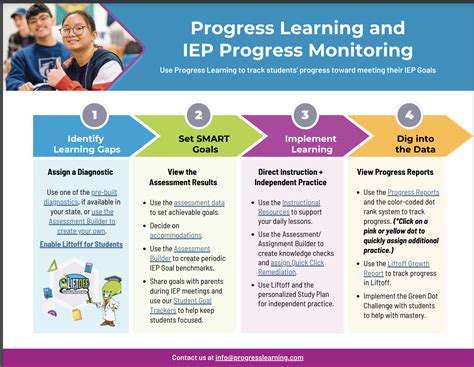
Monitoring Student Progress
Regular monitoring of student progress is crucial for identifying areas where students may need additional support or enrichment. This involves tracking academic performance, attendance records, and engagement levels. By closely monitoring these key indicators, educators can proactively address potential challenges and ensure that all students are on track to meet their full potential. This proactive approach allows for early interventions, potentially preventing larger issues from developing later.
Data analysis plays a vital role in understanding the trends and patterns in student performance. Examining this data helps to determine whether interventions are effective and whether adjustments to teaching strategies or resources are needed. This ongoing analysis allows for a deeper understanding of each student's unique learning style and needs, leading to more personalized approaches.
Analyzing Learning Styles and Needs
Understanding the diverse learning styles of students is essential for tailoring instruction and support. This includes identifying students who learn best through visual aids, auditory instruction, or hands-on activities. By recognizing these preferences, educators can create a more inclusive and engaging learning environment where all students feel supported and empowered to succeed.
Identifying students who may be struggling or excelling beyond expectations is crucial for providing targeted interventions and support. This identification allows for the implementation of individualized learning plans, ensuring that students receive the specific support they require. This proactive approach to learning style identification ensures equitable access to high-quality education for all students.
Implementing Effective Interventions
Once areas of concern or exceptional performance are identified, educators can implement targeted interventions. These interventions may include providing additional tutoring, modifying assignments, or offering enrichment opportunities. The key is to tailor the intervention to the specific needs of the student, ensuring that it addresses the root cause of the challenge or maximizes the student's strengths.
Implementing effective interventions requires a collaborative approach. This includes working closely with parents, guardians, and other support staff to ensure consistency and continuity in the student's learning experience. A holistic approach that involves all stakeholders creates a supportive network that facilitates the student's success.
Utilizing Technology for Enhanced Monitoring and Analysis
Educational technology can significantly enhance the monitoring and analysis of student progress. Various platforms and tools provide data-driven insights into student performance, engagement, and attendance, allowing educators to make informed decisions in real time. These tools allow for tracking progress across multiple subjects and identifying patterns that might not be readily apparent through traditional methods.
Utilizing data visualization tools enables educators to quickly grasp trends and patterns in student performance, allowing for proactive interventions and adjustments to teaching strategies or resources. This data-driven approach to education results in more effective strategies and leads to improved student outcomes.
Read more about Assessing Equity in Hybrid Learning Models
Hot Recommendations
- The Gamified Parent Teacher Conference: Engaging Stakeholders
- Gamification in Education: Making Learning Irresistibly Fun
- The Future of School Libraries: AI for Personalized Recommendations
- EdTech and the Future of Creative Industries
- Empowering Student Choice: The Core of Personalized Learning
- Building Community in a Hybrid Learning Setting
- VR for Special Education: Tailored Immersive Experiences
- Measuring the True Value of EdTech: Beyond Adoption Rates
- Addressing Digital Divide in AI Educational Access
- Preparing the Workforce for AI Integration in Their Careers
